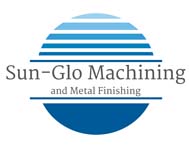Electroless nickel plating is an affordable and effective process that can protect metal parts from corrosion and general wear-and-tear. Unlike many other plating procedures, it does not require the use of electricity, which means it is a chemical procedure that requires the perfect balance of quality materials, state-of-the-art technology, and experience. If you are plating with nickel, you will require the following four “ingredients,” each of which are essential to maximizing the effectiveness of nickel plating.
1. Pretreated Parts
The first thing you need to have when it comes to electroless nickel plating is parts that are properly treated and prepared for the procedure. Think of it like the fresh produce of a great meal. If the pieces are dirty, subpar, or improperly prepared, then the plating will not be as effective.
To that end, all parts should be thoroughly cleaned to remove surface contaminants. If the parts are quite dirty, then additional mechanical treatment, such as shot peening or abrasive blasting, may be required before the electroless nickel plating.This additional step will ensure the pieces are perfectly prepared to be plated more effectively.
2. Pure Water
Water is rarely just H2O. It often has numerous impurities and additional compounds that can compromise the electroless nickel plating process. Water is absolutely necessary in the plating process and should be free of contaminants, especially any metal, to ensure the plating is purely nickel. In general, electroless nickel plating involves using filtered and purified water to ensure maximum effectiveness.
3. Constant Monitoring
During the process, experts need to keep a constant eye to ensure the electroless nickel plating is going smoothly. While much of the work can be automated, there needs to be a continual check of filtering effectiveness and temperature. Filtering ensures that the plating procedure is as pure as possible, and filters with a porosity rate of no more than five microns are the standard for nickel plating. Temperature can also have a major impact on the plating, not just because of expansion and contraction at varying temperatures, but also because high temperatures can actually speed up decomposition in the plating bath.
4. Post-Treatment Process
Think of the post-treatment process as plating for your meals. It’s a chance to make sure everything looks and works the way it is intended, and to ensure that the product is the best it can be. With electroless nickel plating, this means checking for staining and potential hydrogen embrittlement. Each of these suggest an inferior plating and may require another bath.
Electroless nickel plating is a complex and finicky process that can go wrong when not performed by experts. Without the right people, even the most careful plating can end up being subpar, which is why experienced nickel plating professionals are needed. If you have nickel plating needs, Sun-Glo offers a number of options. Our commitment to using the purest ingredients and most advanced techniques, all performed by experienced professionals, means that your plating will be its absolute best.
Sun-Glo Machining and Metal Finishing
quotes@sun-glo.com
800-741-1456
